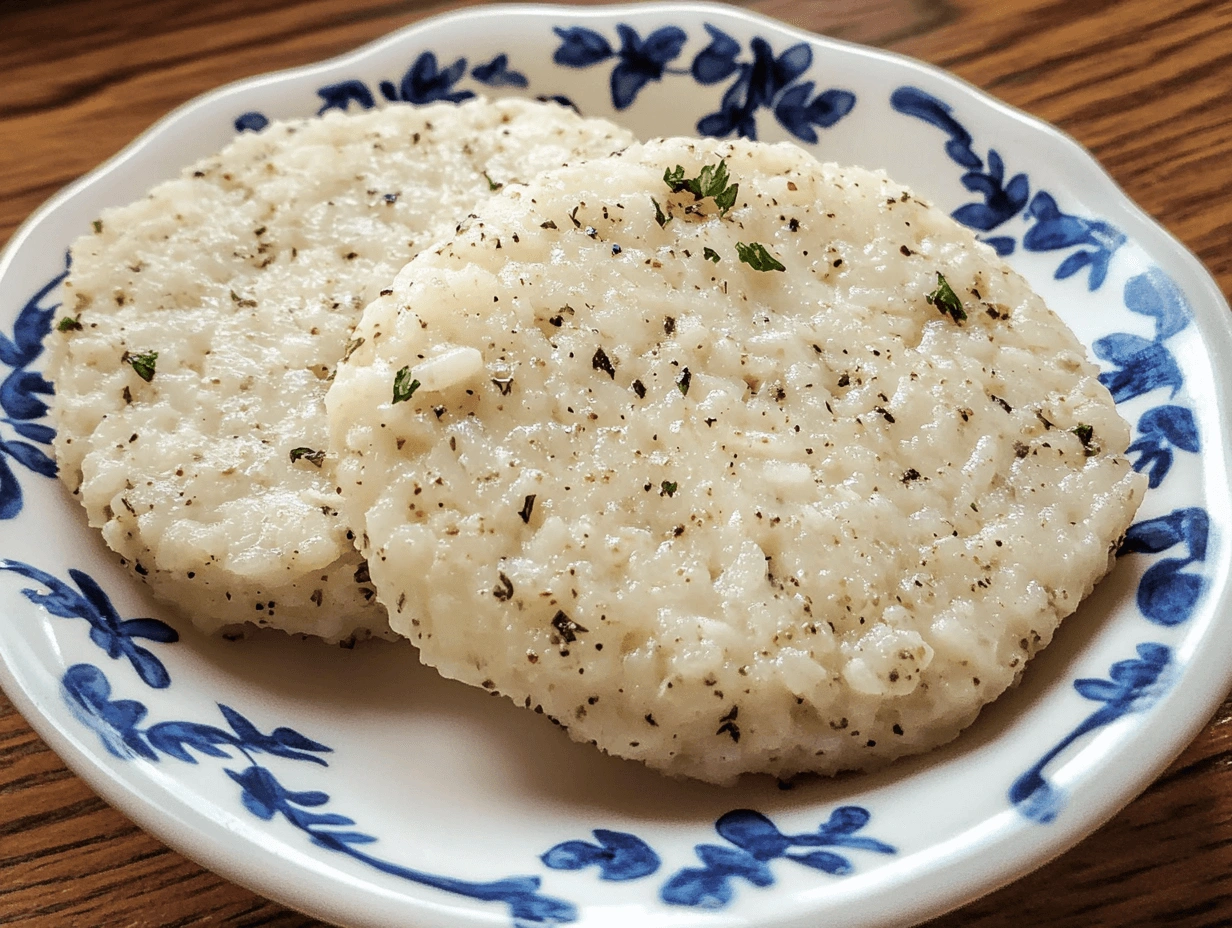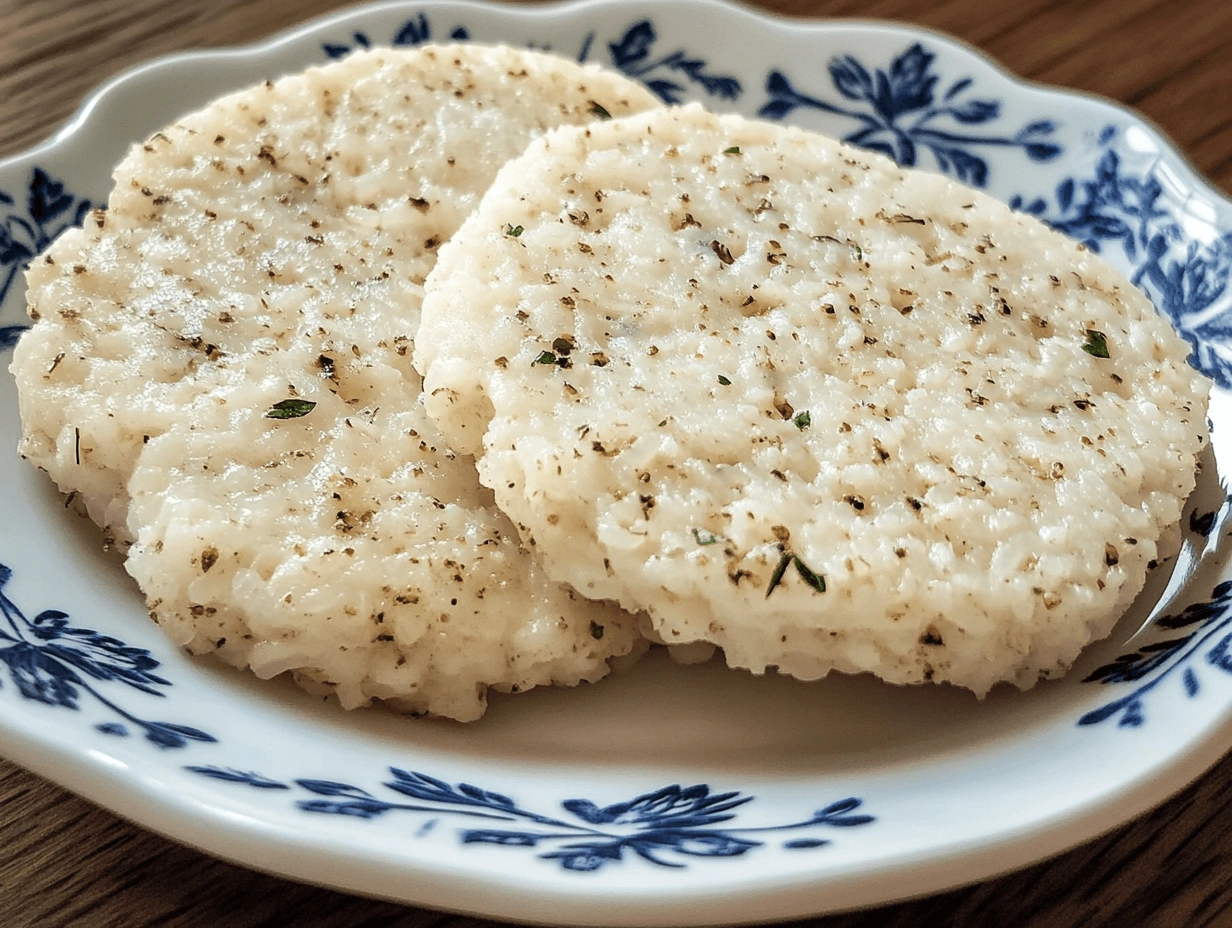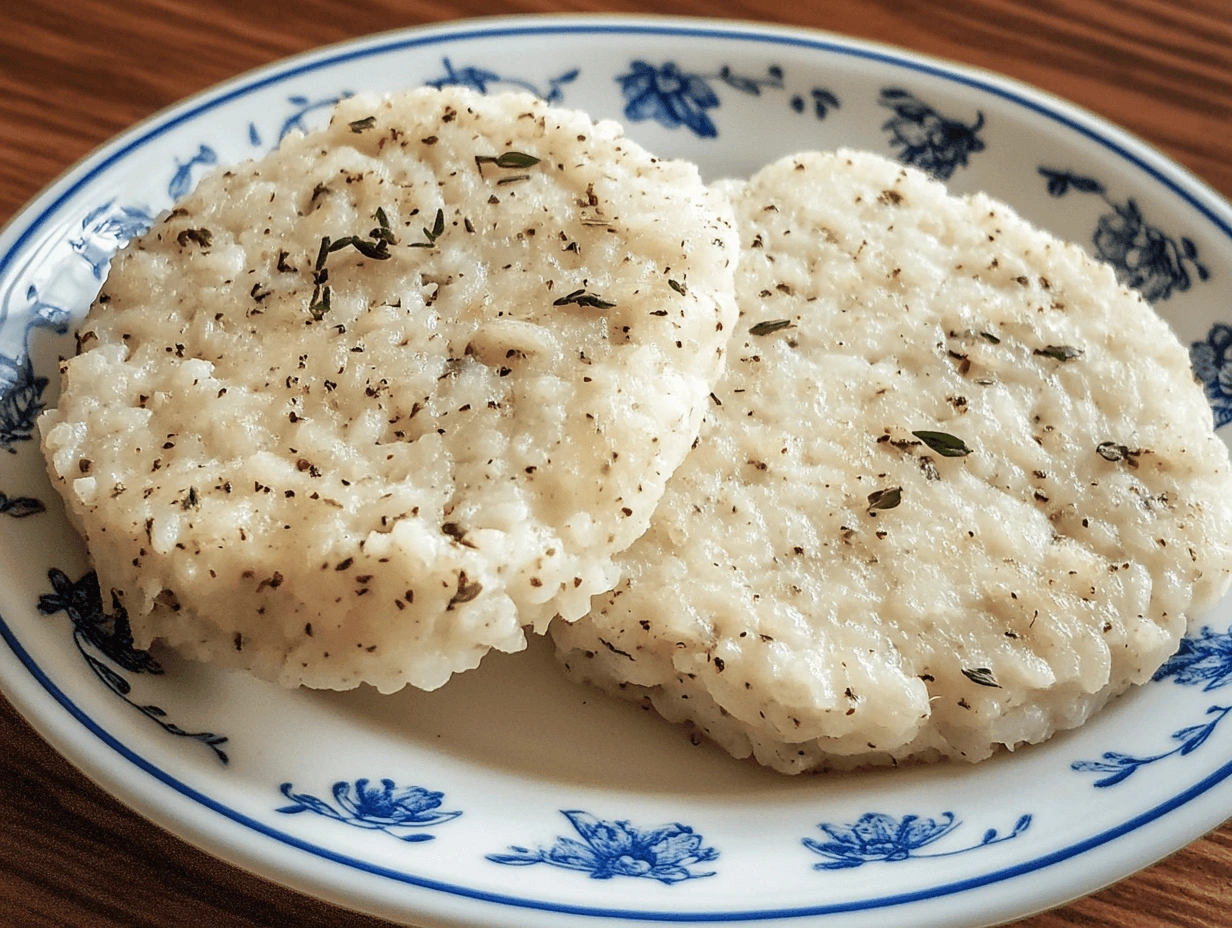Introduction to Homemade Rice Cakes
The Essence of Rice Cakes
Homemade rice cakes are a simple yet versatile food that has earned their place in kitchens worldwide. Typically crafted from puffed or pressed rice, these cakes can vary in texture, from crispy snacks to soft treats, depending on the ingredients and method of preparation. Additionally, homemade rice cakes are incredibly versatile, making them ideal for numerous recipes and personal tastes.
In addition, their universal appeal lies in their ability to cater to diverse dietary needs. For example, homemade rice cakes are naturally gluten-free, which makes them a favorite for those with dietary restrictions. Moreover, they are a healthy, low-calorie snack that pairs well with numerous toppings and dips.
If you’re interested in exploring other rice-based snacks, consider reading The Ultimate Guide to the Perfect Rice Krispie Treat Recipe for an easy and delicious option.
Cultural and Historical Significance
Homemade rice cakes have deep roots in global cuisine. For instance, in East Asia, snacks like Japanese mochi or Korean tteok are integral to festive traditions. Likewise, puffed rice cakes have gained popularity as a go-to snack in many Western homes. In contrast, traditional rice cakes often hold symbolic importance, particularly during cultural celebrations.
Meanwhile, some rice-based snacks might present challenges during preparation. For troubleshooting tips, read Why Are My Rice Crispy Treats Falling Apart?, which offers practical solutions.
Why Make Homemade Rice Cakes at Home?
Customization and Creativity
Homemade rice cakes offer unmatched flexibility. Not only can you experiment with different types of rice, but you can also personalize the flavor and texture to suit your taste. For example, you can add sweeteners for dessert-style rice cakes or spices for a savory version. Additionally, making rice cakes at home allows you to create unique recipes tailored to specific dietary preferences.
Health Benefits and Dietary Flexibility
Rice cakes are naturally low in calories and free of gluten, making them a go-to option for those seeking healthier snack choices. Furthermore, by preparing them at home, you can control the amount of salt, sugar, and other additives, ensuring a nutritious and balanced result.
For a detailed breakdown of rice-based snack ingredients, check out What Are the Ingredients of Rice Krispies?
Essential Ingredients and Tools for Homemade Rice Cakes

Core Ingredients
Types of Rice
- Sticky Rice (Glutinous Rice)
Sticky rice is ideal for creating chewy rice cakes. Furthermore, its adhesive properties make it a staple in Asian recipes like mochi. Additionally, it is perfect for recipes requiring a compact texture. - Jasmine Rice
Known for its fragrant aroma, jasmine rice adds a delicate flavor to both sweet and savory rice cakes. Consequently, it is a great choice for enhancing the overall taste of your recipes. - Brown Rice
A healthier alternative, brown rice offers additional fiber and nutrients. Moreover, its nutty flavor complements savory dishes, making it a favorite for health-conscious individuals.
If you’re curious about other rice-related options, visit How Much Is 6 Cups of Rice Krispies?
Optional Additives
- Sweeteners: Honey, maple syrup, or sugar to create sweet rice cakes.
- Spices: Cinnamon, nutmeg, or cardamom for an aromatic touch.
- Savory Elements: Salt, cheese, or herbs to add flavor.
Kitchen Tools
Must-Haves for Rice Cake Preparation
- Rice Cooker or Pot: A rice cooker ensures evenly cooked rice. Alternatively, a sturdy pot works well with proper monitoring.
- Mixing Bowls: Durable bowls are essential for combining ingredients thoroughly.
- Non-Stick Pan or Steamer: Non-stick pans are great for frying rice cakes, while steamers are perfect for achieving a soft, chewy texture.
- Molds: To create uniform shapes, you can use molds or even cupcake tins.
Alternatives for Specialized Equipment
If you don’t have molds, you can substitute them with simple tools like cookie cutters or lids. Additionally, a non-stick skillet can replace a traditional rice cooker for smaller batches.
Step-by-Step Guide to Making Basic Homemade Rice Cakes

Preparing the Rice
- Washing the Rice
First, rinse the rice in cold water to remove excess starch. Consequently, this process helps achieve a cleaner texture and prevents the rice from clumping. - Soaking
For sticky or brown rice, soaking for at least 4-6 hours is crucial. Not only does this allow the grains to cook evenly, but it also enhances their natural flavor and texture. - Cooking the Rice
Use a rice cooker for consistent results, or cook the rice on the stovetop. For each cup of rice, add 1.5 cups of water. Initially, bring the water to a boil, and then simmer with the lid on until fully absorbed.
For additional tips on rice preparation, check out Why Are My Homemade Rice Crispy Treats So Hard?
Forming the Cakes
- Cooling the Rice
Allow the rice to cool slightly before handling. While warm rice is easier to shape, it should not be too hot to touch. Moreover, cooling prevents the cakes from sticking excessively to your hands. - Shaping Techniques
- Hand-Shaped: Wet your hands to form small patties or balls for a rustic look.
- Mold-Shaped: Use molds or cookie cutters for precise, uniform shapes.
- Binding Additives
If the rice seems too dry, a small amount of water or sweetener can improve its consistency, making it easier to shape.
Cooking Methods
1. Steaming
Place the homemade rice cakes in a steamer basket, ensuring they do not touch. Then, steam for 10-15 minutes to achieve a soft, chewy texture.
2. Baking
Preheat your oven to 375°F (190°C). Afterward, arrange the rice cakes on a lined baking tray and bake for 20 minutes or until they are lightly golden.
3. Frying
Heat a non-stick pan with a thin layer of oil. Next, fry the rice cakes on medium heat, flipping them until both sides are crispy and golden brown.
By choosing any of these methods, you can easily customize the final texture of your rice cakes to suit your preferences.
Delicious Variations and Flavor Profiles of Homemade Rice Cakes
Rice cakes are incredibly versatile, allowing you to explore both sweet and savory recipes. Moreover, their adaptability ensures that they are a favorite for various occasions, from casual snacks to gourmet dishes.
Sweet Rice Cakes
Sweet rice cakes are perfect for dessert lovers and are often served during festive celebrations. Here are some delightful options:
- Traditional Mochi
Mochi is a Japanese classic made from glutinous rice and filled with sweet red bean paste. Additionally, modern variations now incorporate flavors such as chocolate or fruit fillings, which provide a creative twist. - Honey-Glazed Rice Cakes
These lightly fried rice cakes are coated in a mixture of honey and brown sugar, creating a crispy exterior. Furthermore, a sprinkle of sesame seeds or crushed nuts adds both texture and flavor. - Coconut Rice Cakes
Coconut rice cakes are made by incorporating coconut milk and shredded coconut into the mixture, resulting in a tropical flavor. As a finishing touch, you can drizzle caramel or chocolate sauce for added richness.
If you’re looking for more sweet rice-based treats, check out The Ultimate Guide to the Perfect Rice Krispie Treat Recipe.
Savory Rice Cakes
Savory rice cakes are an excellent choice for snacks or appetizers, as they pair well with a variety of dips and toppings. Here are some popular variations:
- Soy-Glazed Rice Cakes
Pan-fried rice cakes coated in a savory soy sauce glaze make for a delicious and easy snack. Moreover, topping them with green onions and sesame seeds enhances their flavor and presentation. - Cheese-Filled Rice Cakes
These rice cakes, featuring a melted cheese center, are both satisfying and indulgent. To elevate the dish, try adding a pinch of herbs such as parsley or rosemary to the rice mixture. - Herb-Infused Rice Cakes
Mixing finely chopped herbs like dill, basil, or chives into the rice creates a fragrant and savory flavor. Consequently, these cakes pair perfectly with soups or light salads.
Fusion Ideas
For those seeking creative options, fusion-inspired rice cakes offer a fun twist:
- Chocolate-Dipped Rice Cakes
Dip baked rice cakes into melted chocolate and sprinkle with crushed nuts or dried fruits. Additionally, using white or dark chocolate can cater to different preferences. - Spicy Rice Cakes
Incorporate chili powder, paprika, or sriracha into the rice mixture for a spicy kick. These are particularly enjoyable when served with a cooling yogurt dip.
If you’re interested in experimenting further, visit 15 Amazing Rice Cake Recipes for additional inspiration.
Serving and Pairing Suggestions for Homemade Rice Cakes
Homemade rice cakes can be elevated with thoughtful presentation and complementary pairings. Therefore, understanding how to serve them creatively can significantly enhance their appeal.
Presentation Tips
- Layered Platters
Arrange rice cakes on a tiered platter for a striking display, especially during gatherings. Additionally, grouping them by flavor helps guests easily choose their favorites. - Garnish Smartly
Use fresh herbs, edible flowers, or powdered sugar for sweet rice cakes. Conversely, savory rice cakes benefit from garnishes like grated cheese or a drizzle of soy sauce. - Bite-Sized Portions
Cutting rice cakes into smaller pieces and serving them with toothpicks makes them perfect for casual events. Moreover, this style of presentation is convenient for appetizers.
Pairing Recommendations
- Dips and Spreads
- Sweet rice cakes pair wonderfully with chocolate sauce, caramel, or fruit preserves.
- On the other hand, savory rice cakes go well with hummus, guacamole, or soy-based dips.
- Beverages
- Sweet rice cakes complement hot beverages like green tea, coffee, or spiced chai.
- Meanwhile, savory options are best paired with sparkling water, iced tea, or light wines.
Occasion-Based Serving
- Festivals and Celebrations
Rice cakes like mochi or honey-glazed varieties are staples during cultural celebrations. Furthermore, their vibrant presentation adds to the festive atmosphere. - Snacks or Appetizers
Cheese-filled or herb-infused rice cakes are perfect as pre-dinner appetizers. Additionally, their compact size makes them convenient to serve. - Gourmet Dining
For a sophisticated touch, top rice cakes with premium ingredients such as smoked salmon, truffle oil, or avocado slices.
To explore more pairing options, visit What Are the Ingredients of Rice Krispies?
Troubleshooting and Expert Tips for Homemade Rice Cakes
Even with detailed instructions, making rice cakes can sometimes present challenges. However, common problems can be easily solved with the right techniques.
Common Mistakes and Fixes
- Crumbly Rice Cakes
- Problem: The cakes fall apart during shaping or cooking.
- Solution: Use glutinous rice for better binding. Additionally, adding a small amount of water or sweetener to the mixture can improve consistency.
- Overcooked or Mushy Cakes
- Problem: The cakes are too soft or lose their shape.
- Solution: Avoid overcooking the rice and allow it to cool slightly before shaping. Moreover, using molds ensures a consistent shape and texture.
- Uneven Cooking
- Problem: Some parts are undercooked or burnt.
- Solution: Cook rice cakes over medium heat, flipping them regularly for even browning.
Pro Tips for Perfection
- Consistency Matters
Ensure the rice mixture is firm yet pliable. If it feels too wet, let it sit uncovered for a few minutes to dry slightly. - Experiment with Ingredients
Try adding spices, citrus zest, or even matcha powder to create unique flavors. - Use the Right Tools
Wet your hands before shaping the rice cakes to prevent sticking and to achieve smooth edges.
Storage and Reuse
- Proper Storage
Store cooked rice cakes in an airtight container. Sweet rice cakes can last up to five days in the refrigerator, while savory ones are best consumed within three days. - Reheating Tips
Reheat rice cakes in a non-stick pan or oven to retain their texture. Avoid microwaving, as it can make them rubbery. - Creative Leftovers
- Slice leftover rice cakes and stir-fry them with vegetables for a quick, flavorful meal.
- Alternatively, crumble them into soups or stews for added texture and richness.
For more troubleshooting tips, visit Why Are My Rice Crispy Treats Falling Apart?
Conclusion: Perfecting Your Homemade Rice Cakes
Rice cakes are a versatile and satisfying addition to any menu. Whether you prefer sweet or savory options, their adaptability ensures they can be tailored to suit every occasion. By following this guide, you can create rice cakes that are both delicious and visually appealing.
For additional ideas and inspiration, explore 10 Ways to Make Rice Cakes Taste Delicious, where you’ll find even more ways to perfect your rice cake creations.


3 thoughts on “10-Minute Homemade Rice Cakes: A Quick Guide”